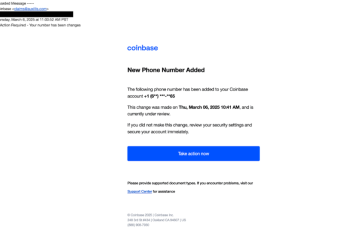Phishing Attacks: Recognising and Preventing Digital Fraud

Introduction
Phishing attacks have become a prevalent form of cybercrime that targets individuals and businesses alike. These malicious attempts to acquire sensitive information, such as usernames and passwords, are increasingly sophisticated, making them a significant threat in today’s interconnected world. With the rise of digital communication and online transactions, awareness and education surrounding phishing are crucial for safeguarding personal and financial data.
The Nature of Phishing Attacks
Phishing typically involves sending an email or message that appears to be from a reputable source, such as a bank or well-known company, to trick the recipient into revealing personal information. In 2023, reports indicate a 15% increase in phishing attacks compared to the previous year, with cybercriminals leveraging more personalised tactics, often referred to as ‘spear-phishing’. This targeted approach increases the likelihood of success as it employs specific details that make the attack seem legitimate.
Recent Incidents and Data Breaches
In August 2023, a major data breach at a prominent healthcare provider exposed the information of nearly 3 million patients, attributed directly to a sophisticated phishing campaign. This incident underscores the significant ramifications that phishing can have not only on individuals but also on entire organisations. Cybersecurity experts emphasise that phishing is often the precursor to larger issues such as identity theft and financial loss.
Strategies for Prevention
Preventing phishing attacks requires a multi-faceted approach: First, individuals should remain cautious about unexpected emails or messages, especially those requesting sensitive information. Second, utilising email filtering solutions can help identify and divert suspicious communications. Regular training and simulated phishing drills for employees in organisations are essential in creating a culture of cybersecurity awareness. Furthermore, implementing multi-factor authentication (MFA) wherever possible can add an extra layer of security, making it more challenging for attackers to gain access even if they acquire login credentials.
Conclusion
As phishing attacks evolve in complexity and frequency, being informed and vigilant is essential in the battle against these cyber threats. The responsibility to recognise and report suspicious activities falls on both individuals and organisations. By enhancing cybersecurity practices and fostering awareness, we can collectively mitigate the threats posed by phishing attacks and protect our digital identity. Keeping updated with the latest security protocols and following best practices will not only shield personal information but also contribute to a safer online community.








